14
Gillies Lumbering, Unloading Logs into the WaterLate 1800s Early 1900s
Lanark County, Ontario, Canada
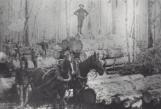 Credits:
Credits:North Lanark Regional Museum (2013.9.20)
Donated by Jim Lowry
15
At Appleton a log slide guided the loose logs or booms over the log slide and into a log pond. Log booms were barriers formed by logs chained together with chains and log dogs that guided the rest of the logs down the river. The logs didn't always stay in the booms and sometimes floated dangerously over the rapids instead of down the log slide.The Mississippi River supported many lumbermen including Abner Nichols who operated a lumber camp at Wilson Bay on the Mississippi Lake and owned two mills in Carleton Place. From Wilson Bay logs were gathered in large booms and attached with log chains and then floated down the Mississippi River to his mills in Carleton Place.
16
Detail of a log dog and log chain with the initials "A.N." for Abner NicholsLate 1800s Early 1900s
Carleton Place, Ontario, Canada
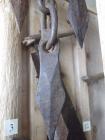 Credits:
Credits:Carleton Place and Beckwith Heritage Museum
17
Logging Display at the Carleton Place and Beckwith Heritage Museum 20122012
Carleton Place, Ontario, Canada
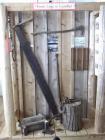 Credits:
Credits:Carleton Place and Beckwith Heritage Museum
18
Joseph Teskey's GristmillLate 1800s, Early 1900s
Appleton, Town of Mississippi Mills, Ontario, Canada
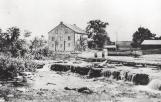 Credits:
Credits:North Lanark Regional Museum (2012.13.38)
Donated by Edna Lowry
19
Joseph Teskey built the grist mill on the East side of the Mississippi River in Appleton in about 1824. The grist mill was eventually passed on to Joseph's son Milton Teskey. During the late 1800s the grist mill was sold or rented to the Brown & Sons Company of Carleton Place and then in 1903 was sold to Mr. Boyd Caldwell of Lanark.The mill supplied flour for baking and also ground grain for the local feed supply.
The original grist mill used millstones to grind or mill the grains. A bedstone sat stationery on the bottom while a runnerstone rotated 1-2mm above the bedstone. Grain was fed through the centre of the runnerstone and was ground between the two stones. Channels in the bedstone and the runnerstone moved the milled flour or grist from the centre to the edges of the stones where it was collected.
20
Appleton Roller Mills, Milton Teskey1898
Appleton, Town of Mississippi Mills, Ontario, Canada
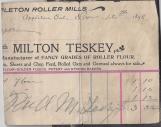 Credits:
Credits:North Lanark Regional Museum (2008.1.568)
21
During the 1880s roller technology was invented for flour and gristmills. This new technology used large porcelain or steel cylinders to crush and grind the grain instead of the large millstones. The cylinders were more efficient and allowed for better control over the quality of milling.During the 1880s or the 1890s Milton Teskey switched the Appleton Mill from millstone to roller technology. During this switch the mill was renamed the "Appleton Roller Mills." In 1898 the Appleton Roller mills sold fancy grades of roller flour, shorts and chop feed, rolled oats and oatmeal.
22
Appleton Roller Mills Flour Bag, restoredCirca 1890s
Appleton, Town of Mississippi Mills, Ontario, Canada
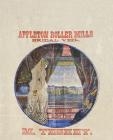 Credits:
Credits:North Lanark Regional Museum
23
The grist mill continued to be used into the early 20th century. During a 2012 interview, former Appleton resident Lenny Spinks described farmers bringing their grain to the mill. According to Mr. Spinks the farmers would bring a load of grain to Appleton and would weigh the load at a set of scales across from the Church before they brought it to the mill. The farmers would then drop off the grain at the mill and would watch as the grain was being ground. Once the farmers had received their final load they would again visit the scales to make sure they had received the proper load in return.24
Appleton Roller Mills Flour Bag, unrestoredCirca 1890s
Appleton, Town of Mississippi Mills, Ontario, Canada
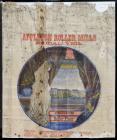 Credits:
Credits:North Lanark Regional Museum
25
The grist mill has disappeared from Appleton. Instead there is a stone house sitting on the same spot. In 1946, newlyweds Jack and Isobel Collie began constructing a home on the site of the former grist mill. The couple actually used some of the stones from the foundation of the mill in the construction of the house.26
Jack and Isobel Collie constructed their house between 1946 and 19471946-1947
Appleton, Town of Mississippi Mills, Ontario, Canada
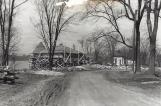 Credits:
Credits:North Lanark Regional Museum (2012.49.1.108)
Donated by Isobel (Meabry) Collie in memory of her husband, John D (Jack) Collie, and his family.
27
This storyline was produced by the North Lanark Historical Society and the North Lanark Regional Museum in Appleton, Ontario (Town of Mississippi Mills). The majority of the research for this project was conducted at the North Lanark Regional Museum using the collection, archives, library and 2012 oral history interviews. The oral history interviews were part of the 2012 "Digitally Preserving the Past for the Future" project, funded by the Museums and Technology Fund through the support of the Government of Ontario, Ministry of Tourism, Culture and Sport. These oral interviews are a great source of local history. Summaries of the interviews are available on our website and the full interviews can be viewed on-site at the museum.To learn more about the early mills in Appleton please contact the staff or volunteers at the museum:
WEBSITE: www.northlanarkregionalmuseum.com
PHONE: 613-257-8503
EMAIL: appletonmuseum@hotmail